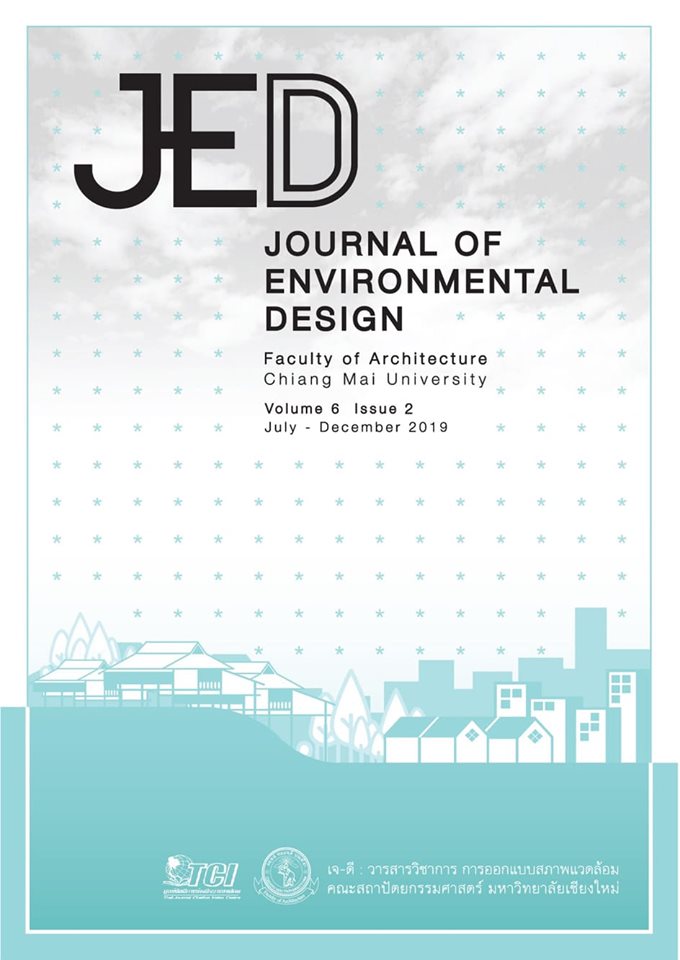การสังเคราะห์ความเชื่อมโยงทางทฤษฎีของตัวตน พื้นที่ และ ชีวิตประจำวัน
Main Article Content
บทคัดย่อ
บทความชิ้นนี้เป็นงานเขียนเพื่อสังเคราะห์งานวิจัยเรื่อง “ตัวตน พื้นที่ และการปรับตัว: สำรวจผ่านพื้นที่ในชีวิตประจำวันของผู้เกษียณอายุที่พำนักระยะยาวชาวญี่ปุ่นในเมืองเชียงใหม่” โดยมีจุดมุ่งหมายอยู่สองประเด็น 1) ต้องการขยายความให้เห็นถึงรอยต่อและความเชื่อมโยงของผลวิจัยกับสองทฤษฎี คือ ปรากฏการณ์วิทยาของมาร์ติน ไฮเดกเกอร์ และ ผลผลิตพื้นที่ของอ็องรี เลอแฟบร์ โดยเฉพาะในประเด็นที่ว่าด้วย “ตัวตน” (being) เพื่อนำไปสู่การค้นหา ระบุ และขยายภาพให้เห็นถึง “ตัวตน” ที่เปลี่ยนแปลงไป และ 2) ต้องการขยายความถึง นิยามและความหมายของคำว่า “พื้นที่” โดยเฉพาะในแนวคิด “พื้นที่ในชีวิตประจำวัน” เพราะถือได้ว่าเป็นกรอบคิดหลักที่เกิดขึ้นและได้นำไปใช้ สำหรับการระบุ ติดตาม อธิบาย และเข้าไปมีประสบการณ์ตรงด้วย การสังเคราะห์ในประเด็น “ตัวตน” และ “พื้นที่” ที่ปรากฏในบทสังเคราะห์นี้ชี้ให้เห็นรายละเอียดในการวิเคราะห์เชิงทฤษฎีของงานวิจัย “ตัวตน พื้นที่ และ การปรับตัว” ได้ชัดเจนขึ้น
Article Details
เอกสารอ้างอิง
Elden, S. (2004a). Between Marx and Heidegger: politics, philosophy and Lefebvre’s the production of space. Antipode, 36 (1), 86-105.
Elden, S. (2004b). Understanding Henri Lefebvre. London: Continuum.
Heidegger, M. (2008). Building dwelling thinking. In Krell, F. D. (Ed.). Basic Writings. (pp.343-364). New York: Harper Perennial Modern Thought.
Heidegger, M., Macquarrie, J. & Robinson, E. (1962). Being and time. San Francisco: Harper.
Lefebvre, H. (1991a). Critique of everyday life: the one-volume edition. London, New York: Verso.
Lefebvre, H. (1991b). The production of space. Oxford: Wiley-Blackwell.
Phenpinant, K. (2009, December 29). Special lecture in the topic “What is phenomenology?”. Chiang Mai: Faculty of Architecture, Chiang Mai University.
Schulz, C. N. (1980). Genius Loci: towards a phenomenology of architecture. New York: Rizzoli International Publications.
Sharr, A. (2007). Heidegger for architects. London: Routledge.
Suwatcharapiun, S. (2018). Phuentee mueang lae sathapattayakam nai naewkid trisadee khong Henri Lefebvre (In Thai) [Space, urban, and architecture in Henri Lefebvre’s theory] In Phungsoondara, V. (Ed.). Parithat nak trisadee manutsat lae sangkhomsat ruam samai. (In Thai) [Introduction to contemporary theorists in the humanities and social science]. Bangkok: Thailand Research Fund.
Usavagovitwong, N. (2011). Phap tuathaen khwammai lae khwam pen karn mueang: bot wikhro choeng Lefebvrian su sathapattayakam. (In Thai) [Representation, meanings, and the political: a Lefebvrian analysis of architecture]. Journal of Architectural/Planning Research and Studies (JARS), 8 (2), 75-87.


